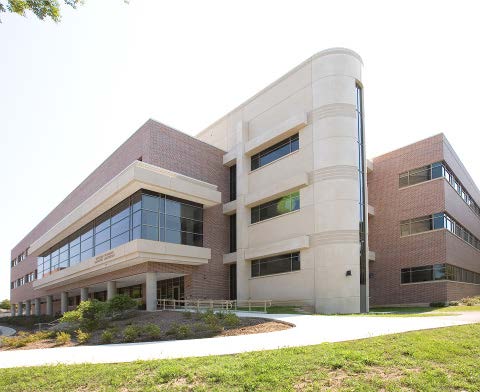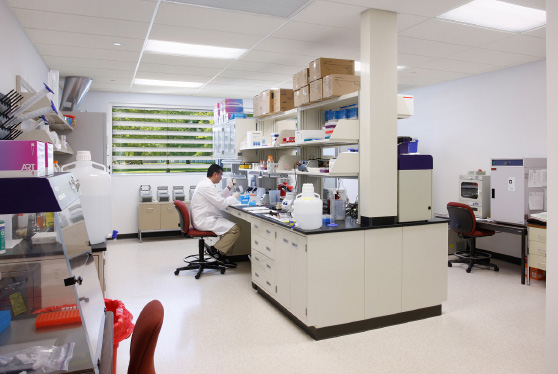Access Control for New Wisconsin Veterinary Diagnostic Lab
IMEG provided electrical and technology engineering design services for a new 78,000 SF Wisconsin Veterinary Diagnostic Laboratory (WVDL). The 3-story building is located on the University of Wisconsin – Madison campus in close proximity to the Small Animal Clinic and the Large Animal Hospital. The lab, an independent Wisconsin state agency with administrative ties to the University of Wisconsin System, is one of the highest volume veterinary diagnostics labs in the country. The WVDL is organized into six main labs: Pathology, Toxicology, Microbiology, Virology, Serology, and Molecular Diagnostics.
Electrical design included splicing into the 15KV campus distribution loop. The 1,900 SF two-story necropsy space utilized high performance fluorescent fixtures for instant on and a higher lamp color rendering index.
A diesel generator was installed to provide back up power for life safety loads, mechanical equipment that is required to always run, and for refrigeration equipment such as walk-in coolers and freezers.
Technology designs included voice, data, access control, paging/sound and wireless clock systems, as well as making provisions for the UW to implement a future free-space optics system. The paging/sound system required an innovative solution for a facility-wide paging system. Additionally, there is a multipurpose room that primarily serves as a lunch/break room which will receive overhead paging. Also used as for meetings and presentations, the room requires a microphone to be integrated into the overhead paging system. This is basically two audio systems within one room. The finish of the ceiling doesn’t allow for two sets of speakers. An audio distribution router was added to combine the general and presentation audio systems so both systems can use the same speakers.
This created a unique challenge: there needs to be a way to mute the general paging in this room only, while allowing the presenter’s microphone to broadcast over the room speakers. The muting needs to be user controlled because there may be occasions where both systems should be able to broadcast simultaneously. To further complicate things, the facility has two reception areas, both of which need to have a visual indication that general paging has been muted in the multi-purpose room.
The solution came partially through the selection of the audio distribution router. A router was selected that allowed for multiple inputs, and selectable outputs with muting through contact closure. A push-button switch was added near the microphone connection that will provide the contact closure and mute the general paging only. The switch, when operated by a user, also provides contact closure to a relay that illuminates an LED labeled “multipurpose room paging muted” at both reception desks.









